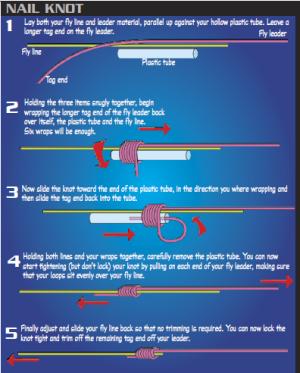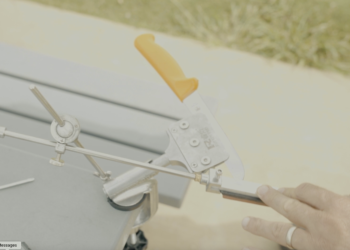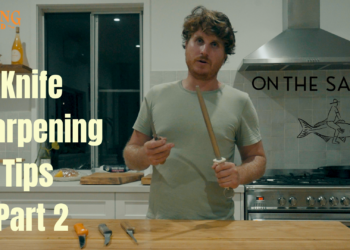Find yourself a nail or a small piece of tubing and you’ll be able to to tie one of the strongest knots around.
FLY fishermen around the world use the Nail Knot for attaching a leader or butt section to a fly line. The unique quality of this connection is its ability to tighten down and lock onto the coating of a fly line. While many fly fishos, myself included, use braided loops on our fly lines for heavy saltwater fly fishing, the Nail Knot remains the preferred connection for the lighter genres of the fly fishing art, where presentation is often the key to success. These basically include any form of sight casting where the target species is easily spooked such as trout, bonefish, permit and whiting, to name a few.
The Nail Knot provides a neat, unobtrusive connection between leader and fly line, which also assists presentation by minimising the “hinging” effect that can occur between leader and fly line when other, bulkier connections are employed. When casting a fly at gun-shy species such as brown trout or bonefish, the quality of the presentation can be just as important as the fly being delivered. Another reason that the Nail Knot is a must have connection in any fly fisher’s arsenal is that if you have the misfortune to break or damage a fly line then it’s the quickest way out on the water to get another leader attached and get back in the game. Most other means of connecting leaders to fly lines require the use of glues, which take time to set.
Versatility
There’s so much more to the Nail Knot than just fly fishing, however. It’s an extremely reliable and neat connection with a high break strength when tied correctly. The Nail Knot can be employed in a wide range of bait and lure rigging scenarios. A double Nail Knot, for instance, can be used for joining lines or attaching main line to leaders of varying diameters. The Nail Knot can also be used very successfully for attaching terminals such as hooks to line or leader. My good mate Grantly Gray is a Nail Knot devotee who used the connection to good effect when landing the magnificent 72kg black marlin that was the highlight of his outstanding LBG DVD Marlin Off The Rocks. Grantly has attached his heavy live bait hooks to the leader using this reliable connection when chasing jewfish, cobia or black marlin for as long as I’ve known him.
How & why
I’ve often thought about why the Nail Knot isn’t used more and the only conclusion I can come to is that it’s one of the few connections that requires a tool to complete. The knot can be tied without the assistance of an implement and I have tied the knot in that manner when forced to, however, it’s certainly easier to produce a neat compact knot with the assistance of a nail or tube. Fly fishing legend Lefty Kreh in his seminal book Fly Fishing in Saltwater credits the famed outdoors writer Joe Brooks with popularising the Nail Knot after discovering it being used by natives in Argentina, where it was tied using a tapered horseshoe nail. However, it’s generally accepted these days that a small piece of plastic tubing, commonly sourced from a used biro pen, is the best tool for the task. On a fly fishing trip to the United States a few years ago an acquaintance gave me a nail knotting tool called a “Tail Knott’r” which performs a multitude of tasks such as tying nail knots, cutting line and opening beer bottles. It’s basically a small stainless steel fish shaped tool which features a slotted tail for tying Nail Knots and it does a great job.
Key factors to remember when tying the Nail Knot include taking care to ensure your line wraps around the tubing, lies neatly and doesn’t crossover. Remember that the smaller the tube you use the easier it is to finish the knot when you remove the tube. Take your time pulling the knot up when the tube is removed to ensure the wraps continue to lay neatly. Finally, pull the knot up with considerable force, especially when it is being used to connect fly line to leader to ensure the line bites down into the fly line coating to ensure a neat transition and reliable connection. Some anglers coat the nail knot with a glue such as Pliobond to ensure it doesn’t hang up in the rod guides. A final tip I received on a bonefishing trip to New Caledonia from Fisho’s fly fishing guru Dean Butler many years ago was to put a hitch of the fly line end around the leader prior to pulling the Nail Knot up. This forces the knot to butt up against the hitch and eliminates the risk of the fly line coating being stripped from the fy line core, which is a possibility if you’re overly heavy handed or using some types of fly lines. A video demonstration of tying the Nail Knot is available online at fishingworld.com.au.
In summary, the Nail Knot is a must have connection in the arsenal of all fly fishers, both fresh and saltwater. It’s a reliable, neat connection with a high break strength that is also very suited to many bait and lure fishing applications.





















